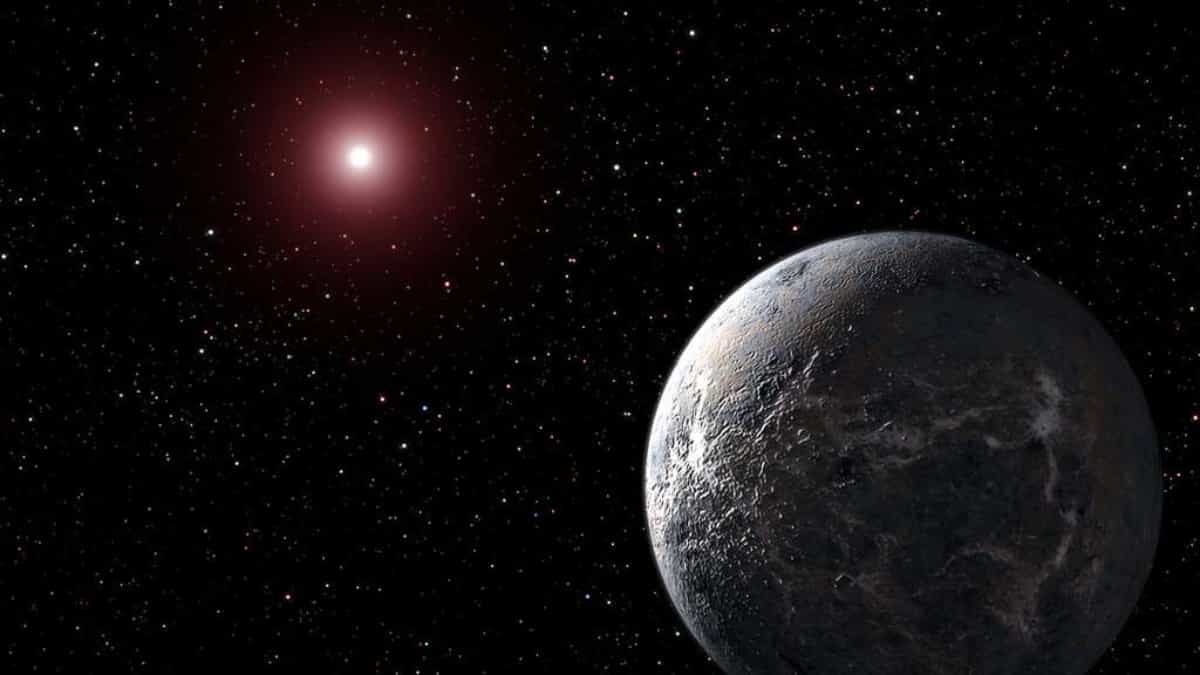
The astronomers were forced to question the theories surrounding the planet’s formation after they stumbled upon an exoplanet which shouldn’t have existed technically.
The discovered planet, which has a mass similar to Neptune and more than 13 times as big as Earth, was spotted orbiting an ultracool M-dwarf star named LHS 3154. Ironically, the star is nine times smaller than our Sun. An M-dwarf star is the coolest and smallest kind of star in the galaxy.
The planet, which has been named LHS 3154b, has been closely orbiting the star and it completes one orbit every 3.7 Earth days. This has emerged as one of the most massive known planets present in a close orbit around one of the most low-mass, coldest stars in the universe, as per the new study published in the journal Science on Thursday (Nov 30).
The discovery of the planet upends how the formation of planetary systems is understood by the scientists. In a statement, study coauthor Suvrath Mahadevan and professor of astronomy and astrophysics at Penn State Verne M. Willaman said, “This discovery really drives home the point of just how little we know about the universe. We wouldn’t expect a planet this heavy around such a low-mass star to exist.”
The stars are formed from massive clouds of dust and gas and a disk is created around them using the leftover material, where planets are later born. The amount of material which is located within the disks surrounding the starts determines how big the planets will be formed around it. The disk material depends largely on the mass of the star.
Throughout the Milky Way galaxy, the small M dwarf stars are the most commonly found and generally they have small and rocky planets which continue to orbit them, rather than gas giant planets.
“The planet-forming disk around the low-mass star LHS 3154 is not expected to have enough solid mass to make this planet. But it’s out there, so now we need to reexamine our understanding of how planets and stars form,” said Mahadevan.
trending now
Scientists look into habitable zones in search of life
The planet has been orbiting around the star nearly 51 light-years away from the sun and was spotted using the Habitable Zone Planet Finder (HPF), which was installed on the Hobby-Eberly Telescope by the scientists at the McDonald Observatory in Texas.
The HPF was built by Mahadevan and his team and was designed for spotting planets which are orbiting within the habitable zone of cool and small stars. The habitable zone refers to the right distance from a star from where a planet is in warm condition for supporting the presence of liquid water on its surface as well as life.
Watch: Cosmic journey: Space balloons & space station visit part of the tour
“Think about it like the star is a campfire. The more the fire cools down, the closer you’ll need to get to that fire to stay warm. The same is true for planets. If the star is colder, then a planet will need to be closer to that star if it is going to be warm enough to contain liquid water. If a planet has a close enough orbit to its ultracool star, we can detect it by seeing a very subtle change in the colour of the star’s spectra or light as it is tugged on by an orbiting planet,” said Mahadevan.
(With inputs from agencies)
